
Diseases and pests of medlar trees
Identify and manage diseases and pests of common and Japanese medlar
Contents
Behind the vernacular name “medlar” lie two trees, both members of the large family of Rosaceae, but distinct in their characteristics and properties. The common medlar (Mespilus germanica) is a hardy fruit tree that can withstand temperatures down to -20 °C, producing medlar fruits in the heart of winter, while the Japanese medlar (Eriobotrya japonica), also known as loquat, only grows in the ground in the south of France due to the risk of frost during its spring flowering. Its orange fruits, known as loquats, are harvested between May and June. However, as Rosaceae, both medlars can be susceptible to the same diseases and pests, with their proliferation heavily dependent on weather and cultural conditions. We help you identify, prevent, and treat the various diseases and pests affecting the medlar.
The main pests of medlar trees
Because they are fruit trees from the Rosaceae family, Japanese medlar and common medlar can be attacked by voracious pests that target both the fruit and the foliage. Some are particularly concerning as they carry diseases.
The Mediterranean fruit fly
This Mediterranean fly, Ceratitis capitata to give it its proper name, primarily targets the Japanese medlar, especially the bibaces. Highly colourful, this fly thrives mainly in regions with a mild climate. It is the larvae that pose the greatest threat: they hatch inside the fruit, where the female has laid her eggs, and feed on the flesh.

The Mediterranean fruit fly is identifiable and noticeable due to its colours
In practical terms, an attack by fruit flies is detected by the appearance of brown spots on the fruit. The spots grow larger, and the fruit eventually rots before falling prematurely.
To combat this Mediterranean fly, there are various methods:
- monitoring the fruit. As soon as the first spots appear, they should be collected and destroyed
- placing a fine mesh net on the ground prevents the flies from flying after their hibernation
- installing fruit fly traps based on the use of pheromones is by far the most effective solution.
Aphids
Aphids can indiscriminately attack both common and Japanese medlar. They pierce the leaves and suck the sap, weakening the trees. The leaves curl up, and the honeydew makes them sticky, thereby attracting ants that “farm” this honeydew. Additionally, aphids are often vectors of diseases.
The main preventive measure is the installation of glue bands from April to June to prevent ants from climbing up the trees. Applying tree whitewash made from lime on the trunk in winter helps prevent a new invasion.
Otherwise, introducing larvae of predatory beneficial insects that feed on aphids proves effective. Ladybird larvae, hoverflies, and lacewings are the most voracious. However, the best solution remains cultivating a natural garden where biodiversity thrives, attracting beneficial insects and birds.
Scale insects
Scale insects can also target medlars. These piercing-sucking insects attack the leaves and stems. To get rid of them, spraying nettle manure can be effective, as can using a powerful jet of water on the branches.
As a preventive measure, treating with tree whitewash in autumn and early spring helps avoid a new attack.
Scab, the main disease of the medlar
Fruit tree scab is a fungal disease that primarily affects the Japanese medlar. It is caused by the fungus Fusicladium Dentriticum, which generally develops when heat and humidity prevail.
Symptoms
Leaves become blistered, brown spots appear on the leaves, and the fruits eventually fall off.
Prevention and control
- A spray of Bordeaux mixture in spring during bud break, to be repeated when the fruit is the size of a hazelnut. Horsetail manure can also be effective for prevention.
- Carefully collect and destroy affected leaves and fruits by burning them.
- Thoroughly clean the area under the tree and remove fallen leaves and fruits.
Discover other Medlar trees
View all →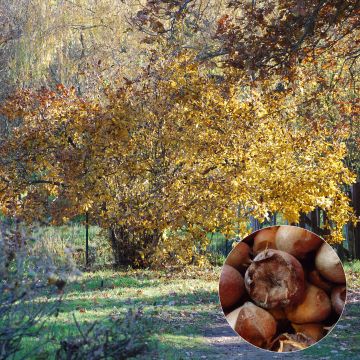
Available in 1 sizes
Available in 2 sizes
Available in 5 sizes
Available in 1 sizes
Available in 1 sizes
Available in 1 sizes
Available in 1 sizes
Available in 1 sizes
Available in 1 sizes
Moniliosis, a disease that mummifies fruits
Medlar moniliosis is a cryptogamic disease caused by various fungi, affecting most fruit trees in the Rosaceae family. It often appears during wet seasons and develops on fruits already weakened by thin or birds.
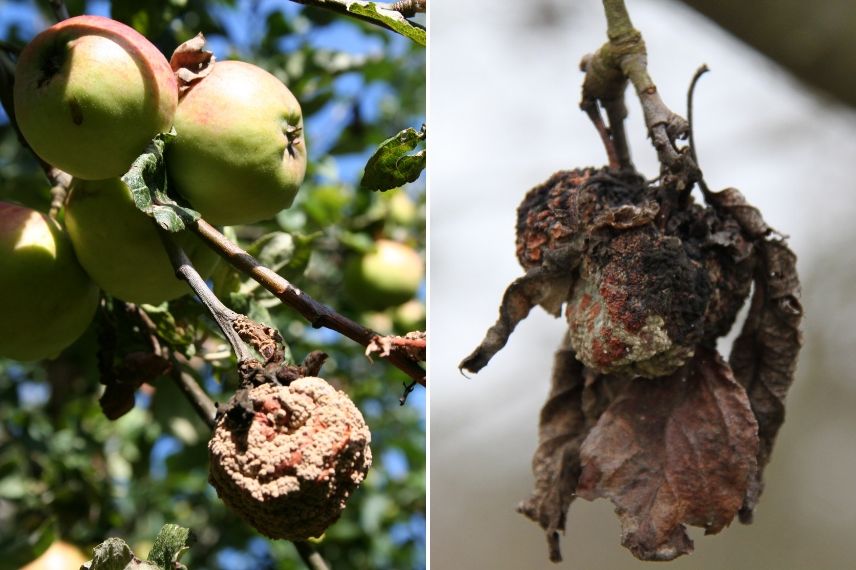
Medlar moniliosis affects many fruit trees
Symptoms
In winter, cankers can be seen on the branches. Later, during fruiting, the medlar fruits develop a brown spot and white dots. They eventually rot and mummify on the tree.
Control and prevention
- Remove all mummified fruits and branches bearing these fruits or covered in cankers, and collect any spoiled medlar fruits that have fallen to the ground.
- Apply a treatment of Bordeaux mixture during the bud burst period. A spray of nettle manure may also be effective. These two preventive treatments can be repeated during the fall of flower petals.
Bacterial blight, fatal for the medlar
It is the bacterium Erwinia amylovora that causes the very serious disease known as fire blight. It generally affects fruit or ornamental trees from the Rosaceae family, with both Japanese medlar and common medlar being susceptible.
The first symptoms usually appear in spring during warm and humid periods on inflorescences, young shoots, and leaves.
Symptoms
Leaves exhibit blackening first on the petiole and veins, then across the entire surface. This blackening resembles burns. Flowers and young shoots dry out and die. The disease can spread to the main branches and trunk.
Control and prevention
There is no way to combat fire blight, a highly contagious disease that must be reported to the local council or the regional plant protection service after identification.

Fire blight (as illustrated on a pear tree)
Strict pruning and the burning of infected shoots, or even uprooting the medlar, are the only solutions to eradicate the disease.
Entomosporiosis, typical of Rosaceae
Lentomosporiosis is a fungal disease caused by the fungus Entomosporium maculatum that affects some trees in the Rosaceae family, such as medlar, quince, and pear trees. The spores of this fungus resemble an insect. A humid period in spring or summer facilitates the development of the disease.
Symptoms
Small necrotic and round spots appear on the leaves. They change from reddish to brown. Then, the leaves turn yellow and fall off. The symptoms can also affect the fruits, which may crack and fail to develop properly.
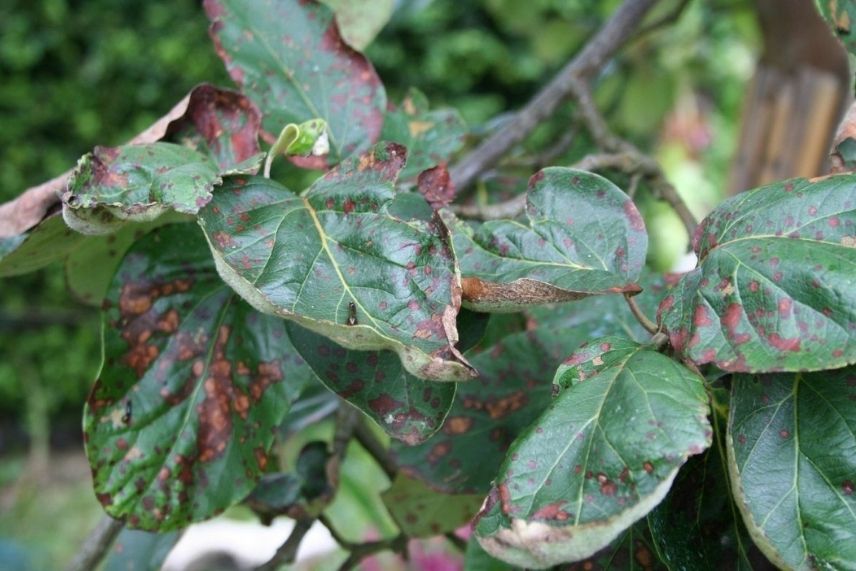 Entomosporiosis significantly affects quince (our photo) but can also develop on medlar.
Entomosporiosis significantly affects quince (our photo) but can also develop on medlar.
Control and prevention
- Collect and destroy by fire the dry leaves and branches, as well as infested fruits
- Apply a spray of Bordeaux mixture in autumn, during leaf fall, and in spring during the bud burst period.
Rot in very humid conditions
Medlar trees can also suffer from the ravages of grey mould or root rot, two diseases caused by excessive moisture.
Grey mould generally affects medlar trees planted in poorly drained soils or in cases of too frequent and excessive watering. It is sufficient to drastically reduce water supply or provide better-drained soil for the freshly planted bush.
As for grey mould, it is caused by the fungus Botrytis cinerea, which is very difficult to treat. The disease manifests as the appearance of brown spots covered with a grey fluff on all parts of the tree. To combat it, one must limit watering and excess nitrogen, and spray nettle manure or horsetail manure as a preventive measure.
- Subscribe!
- Contents
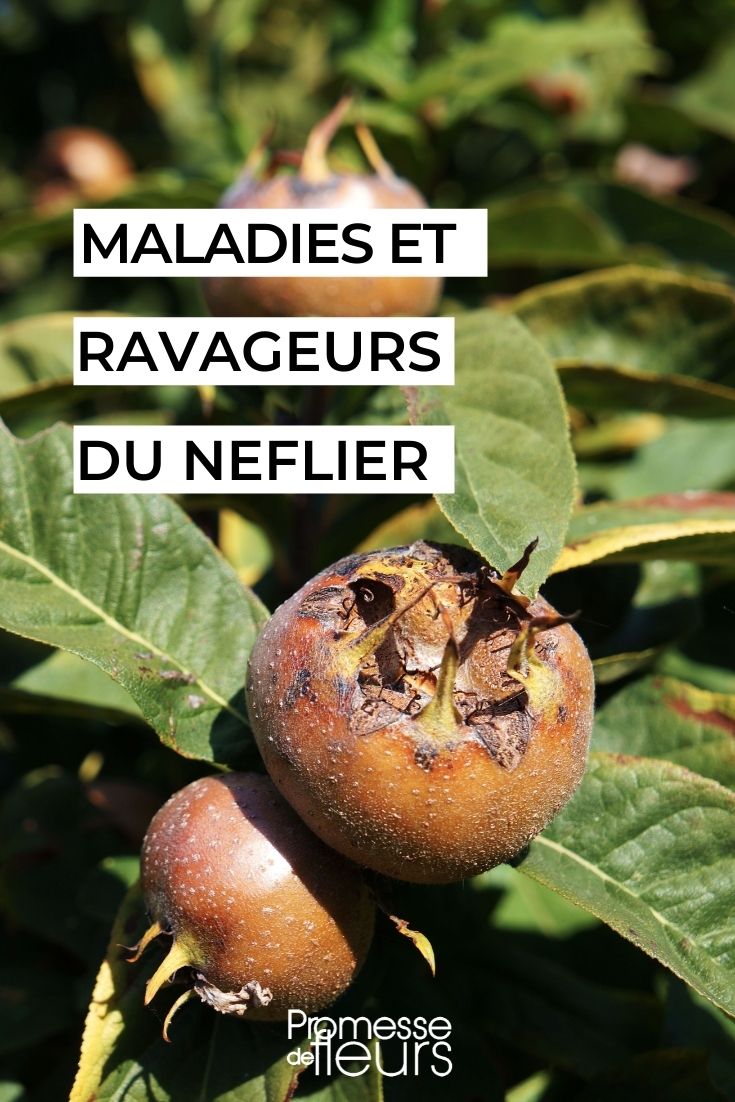

































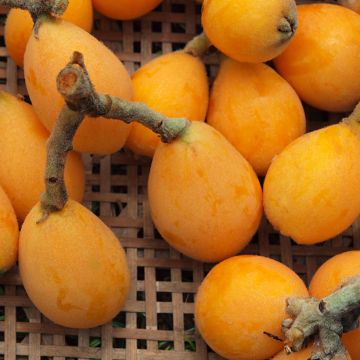

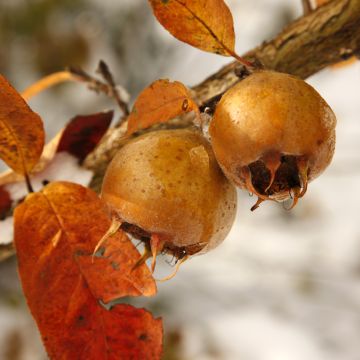
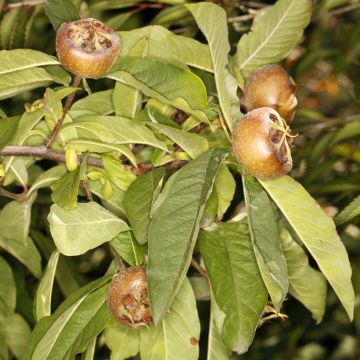

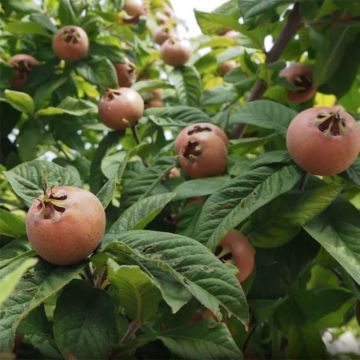
Comments